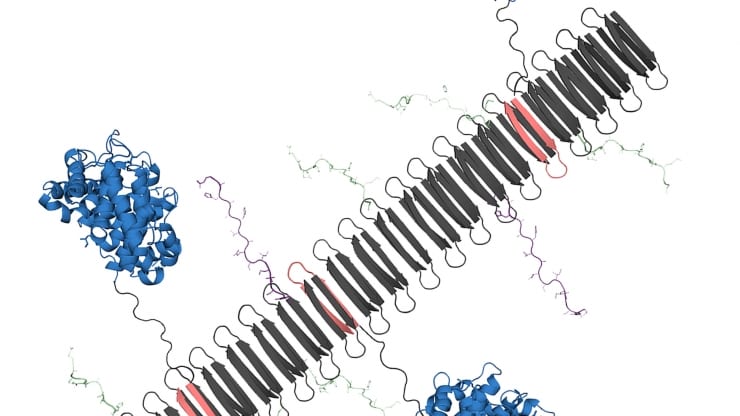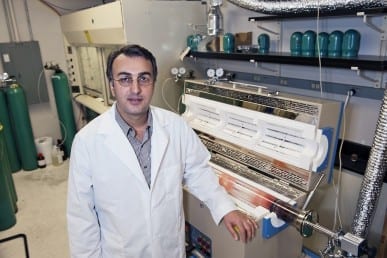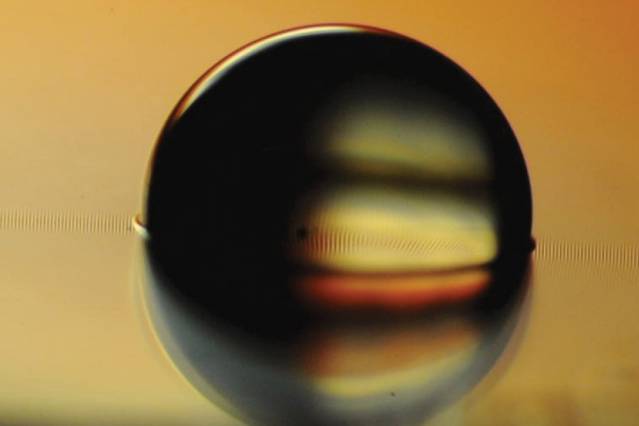
There’s a good reason people over 60 are not donor candidates for bone marrow transplantation.
The immune system ages and weakens with time, making the elderly prone to life-threatening infection and other maladies, and a UC San Francisco research team now has discovered a reason why.
“We have found the cellular mechanism responsible for the inability of blood-forming cells to maintain blood production over time in an old organism, and have identified molecular defects that could be restored for rejuvenation therapies,” said Emmanuelle Passegué, PhD, a professor of medicine and a member of the Eli and Edythe Broad Center of Regeneration Medicine and Stem Cell Research at UCSF. Passegué, an expert on the stem cells that give rise to the blood and immune system, led a team that published the new findings online July 30, 2014 in the journal Nature.
Blood and immune cells are short-lived, and unlike most tissues, must be constantly replenished. The cells that must keep producing them throughout a lifetime are called “hematopoietic stem cells.” Through cycles of cell division these stem cells preserve their own numbers and generate the daughter cells that give rise to replacement blood and immune cells. But the hematopoietic stem cells falter with age, because they lose the ability to replicate their DNA accurately and efficiently during cell division, Passegué’s lab team determined.
Especially vulnerable to the breakdown, the researchers discovered in their new study of old mice, are transplanted, aging, blood-forming stem cells, which lack the ability to make B cells of the immune system. These B cells make antibodies to help us fight all sorts of microbial infections, including bacteria that cause pneumonia, a leading killer of the elderly.
In old blood-forming stem cells, the researchers found a scarcity of specific protein components needed to form a molecular machine called the mini-chromosome maintenance helicase, which unwinds double-stranded DNA so that the cell’s genetic material can be duplicated and allocated to daughter cells later in cell division. In their study the stem cells were stressed by the loss of activity of this machine and as a result were at heightened risk for DNA damage and death when forced to divide.
The researchers discovered that even after the stress associated with DNA replication, surviving, non-dividing, resting, old stem cells retained molecular tags on DNA-wrapping histone proteins, a feature often associated with DNA damage. However, the researchers determined that these old survivors could repair induced DNA damage as efficiently as young stem cells.
“Old stem cells are not just sitting there with damaged DNA ready to develop cancer, as it has long been postulated” Passegué said.
But not all was well in the old, surviving stem cells.
Read more . . .
The Latest on: Immune system
[google_news title=”” keyword=”Immune system” num_posts=”10″ blurb_length=”0″ show_thumb=”left”]
via Google News
The Latest on: Immune system
- Scientists develop experimental type 1 diabetes drug which shields insulin-making cells from immune system attackon May 7, 2024 at 2:55 pm
Research into an experimental type 1 diabetes drug has shown that it appears to stop and reverse the condition in mice, and can even prolong their life. The antibody drug, called mAb43, works by ...
- New mRNA cancer vaccine helps immune system fight deadly brain tumorson May 7, 2024 at 8:23 am
Researchers from the University of Florida have developed a new mRNA cancer vaccine to retrain the body's immune system to attack and potentially treat glioblastoma, a deadly form of brain cancer.
- Hacking the immune system could slow ageing — here’s howon May 6, 2024 at 4:59 pm
Yet all she had done was to briefly treat them — many weeks earlier — with a drug that corrected the organization of proteins inside a type of stem cell. When technicians who were replicating her ...
- Researchers generate direct measurement of interaction between immune cells and cancer cells from a patient's biopsyon May 6, 2024 at 1:49 pm
Researchers at Bar-Ilan University have unveiled a technology that promises to improve cancer treatment decisions based on a patient's biopsy. The pioneering biological research and development ...
- 32 incredible foods to boost your immune systemon May 6, 2024 at 1:00 pm
Containing high levels of vitamins C and K, as well as beta carotene, folate, and fibre, spinach is a powerful immune booster. Eat it wilted alongside salmon for dinner or blend the fresh leaves into ...
- Researchers find B cells drive responses of other immune cells, can be modified to prevent multiple sclerosis symptomson May 6, 2024 at 6:30 am
B cells can control responses of myeloid cells through the release of particular cytokines (small proteins that control the growth and activity of cells in the immune system), disproving the previous ...
- Bar Ilan Researchers Measure Interaction bet. Immune and Cancer Cells in Patient’s Biopsyon May 6, 2024 at 2:05 am
“Cancer cells can manipulate immune cells, evading the body’s natural defenses,” explains Dr. Shahar Alon, lead researcher at Bar-Ilan University’s Faculty of Engineering. “By quantifying the ...
- Four signs your immune system is run down - and what to do about iton May 3, 2024 at 2:46 am
It's a complex system involving many different functions within the body and lots of things can affect how it's working and, in turn, how you feel. These are some of the signs your immune system is ...
- Unlocking the immune system: cGAS-STING pathway offers new hope for cancer breakthroughson May 2, 2024 at 5:00 pm
A groundbreaking study has recognized the cGAS-STING signaling pathway as a formidable ally in the immune system's battle against cancer.
- Found: the dial in the brain that controls the immune systemon April 30, 2024 at 5:00 pm
Scientists identify the brain cells that regulate inflammation, and pinpoint how they keep tabs on the immune response.
via Bing News










